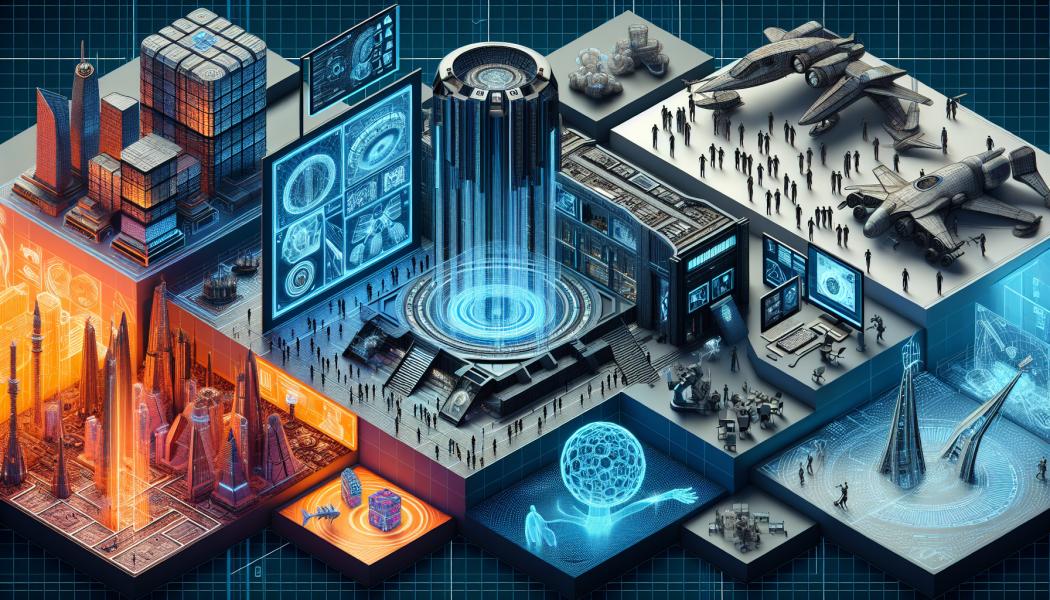What is 3D Modelling and What is it Used For?
Ever wondered how 3D modelling is deeply rooted in our everyday lives? Emotions apart, it’s an evolving at a break-neck speed market, propelled by demand and technological advances.
If you want to join the trend and be among the first companies to unleash an unmatched market possibilities, welcome to this article. The 3D experts from Amaspace have gathered the juiciest details about 3D modelling and how to use it in your business.
What is 3D Modelling?
3D modelling is the process of generating three-dimensional representations of an item or surface. For this purpose, 3D modelling software manipulates vertices, edges, and polygons to create a 3D object in a simulated 3D space. For example, you can create hyperrealistic objects and people, animate them, and prepare for further implementation in reels, websites, etc.
Moreover, 3D models are not just about visual representation — they define an object's surfaces and textures. Different types of models cater to various needs, from basic visual outlines to comprehensive models with complete volume and texture details. This flexibility makes 3D modelling an indispensable tool across industries, revolutionizing how we create, visualize, and implement designs in the digital age.
How Does 3D Modelling Really Work?
As we mentioned before, any 3D model consists of vertices, polygons, and faces combined in a mesh, which serves as the 3D model's core. Each point on the model may be adjusted to vary its form. The 3D modelling software, like Maya, Blender, Autodesk 3Ds Max, etc., uses coordinate data to identify the position of each vertical and horizontal point, all relative to a reference point. Then a special mapping is used to overlay the surfaces and imitate materials.
Understanding these basics sets a strong foundation for delving into 3D modelling, whether you're aiming to create animated characters for your game or design a new product.
What is 3D Modelling Used For?
3D modelling has revolutionized the way industries approach design, visualization, and production. Let’s take a closer look at its diverse applications.
Product Design and Visualization
3D models are artifacts that once created could be repeatedly recreated in many projects. Along with their ability to access the object from any angle, 3D modelling is highly demanded in architecture, product design, testing, etc. For example, in architecture, 3D models are used in plans and visualize buildings before construction. In product design, they work fine for prototyping and adjustments.
Amaspace as a pioneering company in the field of 3D design and customization, brings a visual prowess and artistic approach to its projects. We help companies grow with our forefront digital solutions, in which product visualization is our knack.
Animation
Once you have a 3D model, it can be fully rigged and animated, which is incredibly useful for animation. When developing films and television programs, animators employ 3D models to achieve a clean, seamless look instead of thousands of pictures. Throughout the process, 3D modelling is utilized to build scenery, characters, props, and other elements.
Most animated films will use some kind of 3D modelling software. The capacity to animate extends beyond animation. It also comes in useful for special effects in movies, among other uses.
3D Printing
In 3D printing, 3D serves as a blueprint to create physical objects. It's much more than simply small figurines and toys made using at-home printers; there are many practical applications for 3D printing. For example, it has been used to construct personalized prostheses and implants, as well as anatomically perfect surgical planning models.
Industries Using 3D Modelling
To our knowledge, 3D modelling empowers businesses across many industries to outperform and stand out. Let’s make a brief overview of some cases. However, the list of 3D model applications is endless since they are employed in practically every business in one way or another.
Marketing
TEven having the largest teams working on your product advertising campaign will not ensure success unless you have a captivating picture to sell your goods. Funny story, merely a few years ago, marketers pondered what 3D modelling was and how they might profit from it, and now it’s an integral component of every converting marketing effort.
The thing is that 2D visuals are a remnant of the past. They do not pay off when compared to appealing and engaging three-dimensional images.
Healthcare
Healthcare is one of the most advanced industries, so it can’t but help to integrate 3D technology into their workflow. The list of uses is immensely long, starting with 3D-printed prosthetics, and ending with 3D educational and training resources for future doctors.
Jewelry
3D jewelry configurators are another sphere worth mentioning. Since production here is costly, companies try to avoid overproduction and focus on tailored personalized products. It helps to find their unique niche and future-proof the brand.
Water Sport
Boats are like cars. They are heavily featured, various, and expensive. That’s why 3D modelling could be the best choice to showcase the product without lengthy explanations about technologies and packages. Closing deals has become easier than ever before.
Gaming
While cinema and television employ 3D modelling to generate CGI people, settings, objects, and animations, current games develop whole visual 3D components to simulate a real-life experience. Honestly speaking, they achieved a lot. Present-day games are grounded on hyperrealistic 3Ds, except for some minor genres.
3D Modelling Tips for Your Product Customization
Product customization for your e-commerce platform is another killer feature for your sales. Comprehensive, smooth, and visually appealing configurators entice customers and result in more closed deals with less selling efforts.
From our practice, we see room for improvement for many online stores. They need to keep in mind the following aspects while implementing 3D models instead of photos.
Interested? See more in our article about product configurators in e-commerce.
Conclusion
Through this exploration of 3D modelling, we've traversed its applications from the realms of entertainment and game development, architecture, and the medical field. It’s a wonder — you manipulate vertices, polygons, and textures—and a 3D model drives innovation, enhances visual storytelling, and streamlines product development.
Amaspace is a frontier company leveraging 3D designs to benefit of others. We strive for technical perfection and stylistic prowess for you to grant impeccable results. For those ready to dive deeper into the 3D digital world, learn how this technology can elevate your projects.

